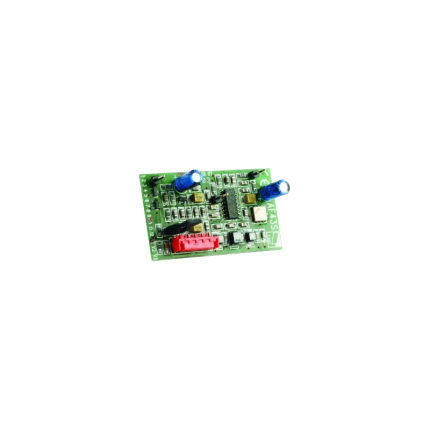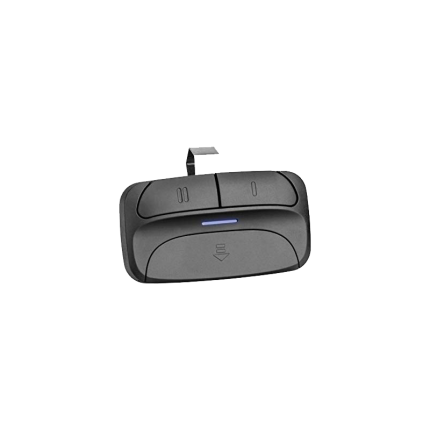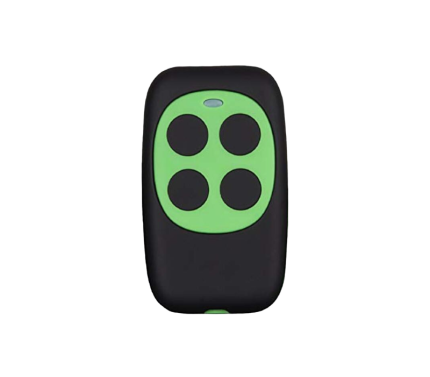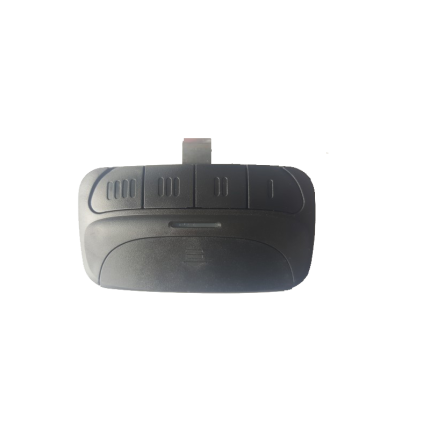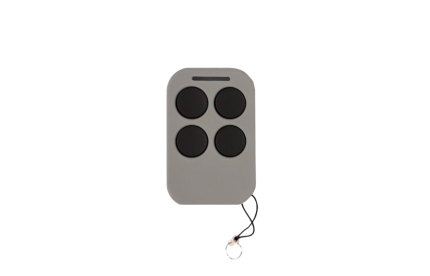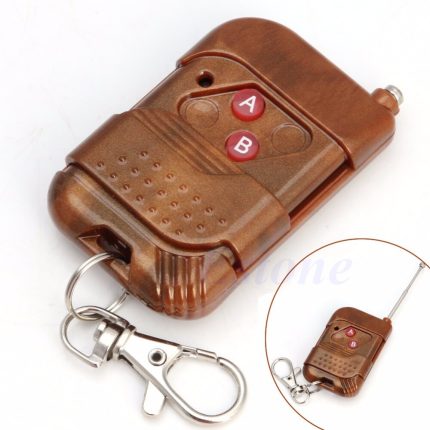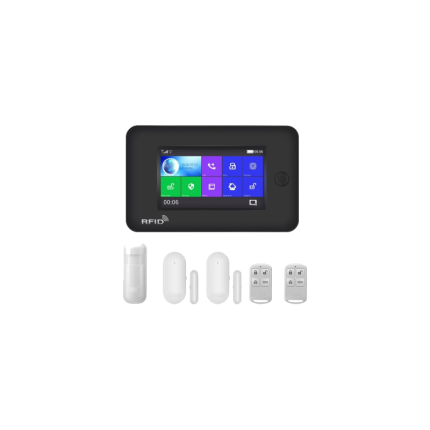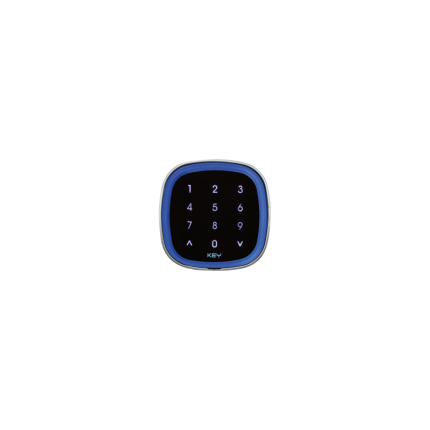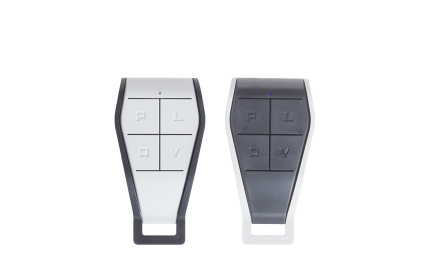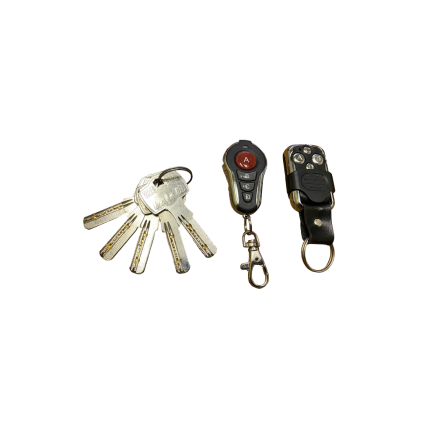remote
Delay relay 0.5 Sec – AC 24 V to AC 24 V
Ship or pick up from our office.
Delay relay 0.5 Sec - AC 24 V to AC 24 V
delay relay 0.5 Sec - AC 24 V to AC 24 V is a type of electrical relay that introduces a 0.5-second time delay in a circuit, specifically designed to operate with a 24-volt AC (Alternating Current) power supply. This means that when the control voltage (24V AC) is applied or removed, the relay's output contacts won't change their state immediately; instead, there will be a half-second pause before they do. Here's a breakdown of what each part of the description means:- Delay Relay (or Time Delay Relay/Timer Relay): This is a control device that, unlike a standard relay, incorporates a timing function. It's used to control an event based on a pre-selected time interval.
- 0.5 Sec: This specifies the duration of the time delay. In this case, it's a very short half-second delay. Time delays can range from milliseconds to hours or even days, depending on the relay.
- AC 24 V (Input/Control Voltage): This indicates the type and voltage of the power supply required to energize the relay's coil or internal control circuitry. "AC" means Alternating Current, and "24 V" is the nominal voltage.
- to AC 24 V (Output/Load Voltage): While not explicitly stated as "output," this implies that the relay is likely intended to switch a 24V AC load. This means the contacts within the relay are rated to handle 24V AC to control another part of the circuit or a device. It's important to note that the load voltage can sometimes be different from the control voltage, but in this specific phrasing, it suggests both are 24V AC.
- On-Delay (Normally-Open, Timed-Closed - NOTC): The most common type. When the control voltage is applied, the timing period begins. After 0.5 seconds, the output contacts close. The contacts remain closed as long as the control voltage is present.
- Off-Delay (Normally-Open, Timed-Open - NOTO): When the control voltage is applied, the output contacts close immediately. When the control voltage is removed, the 0.5-second delay begins. After this delay, the contacts open.
- One-Shot: Provides a single output pulse of a specified duration (in this case, 0.5 seconds) when triggered.
- Repeat Cycle: Alternates between ON and OFF states for defined durations, creating a repeating cycle. This particular relay with a fixed 0.5-second delay is less likely to be a multi-function repeat cycle unless it's just one setting within a programmable unit.
- Sequencing Operations: Ensuring one component starts or stops slightly after another in a controlled sequence.
- Motor Control: Providing a brief delay before starting a motor (e.g., for pre-lubrication pumps to stabilize).
- Safety Interlocks: Implementing a short delay to ensure certain conditions are met before an action can occur.
- HVAC Systems: Timing the activation or deactivation of fans, compressors, or other components.
- Conveyor Systems: Coordinating the starting or stopping of multiple conveyor belts to prevent material jams.
- Lighting Control: For example, a short delay before turning on a light in a specific area
Garage Door Opener Remote Control
Ship or pick up from our office.
Garage Door Opener Remote Control
A garage door opener remote control is a small, handheld device that uses radio frequency (RF) signals to wirelessly communicate with your garage door opener system. Essentially, it's a transmitter that sends a unique code to a receiver built into your garage door motor unit, telling it to open or close the garage door. Here's a breakdown of how it works and its key features: Functionality:- Signal Transmission: When you press a button on the remote, it sends a radio frequency signal containing a specific code.
- Signal Reception: The garage door opener has a receiver that constantly "listens" for these signals.
- Code Matching: If the received code matches the opener's stored code, the receiver activates the motor.
- Motor Activation: The motor then powers a drive mechanism (chain, belt, screw, or direct drive) that moves the garage door up or down.
- Radio Frequency (RF) Communication: Most remotes operate using RF signals (commonly 315 MHz or 390 MHz), allowing them to work from a distance and even through walls.
- Fixed Code Technology (Older): Early remotes used a fixed code that was sent every time. This was less secure as the signal could be easily intercepted and duplicated.
- Rolling Code Technology (Modern): To improve security, modern remotes use rolling code technology. The code changes every time you press the button, making it extremely difficult for unauthorized individuals to "grab" and reuse the code. Brands like LiftMaster (Security+ / Security+ 2.0) and Genie (Intellicode®) use their own versions of this.
- Dip Switches (Older): Some older remotes used physical dip switches that needed to be manually set to match the receiver's code.
- Wi-Fi and Smart Home Integration: Many newer garage door openers feature built-in Wi-Fi, allowing you to control your garage door from anywhere using a smartphone app (e.g., MyQ for LiftMaster/Chamberlain, Aladdin Connect for Genie). These apps often offer additional features like real-time notifications, scheduling, and access history.
- Multi-Button Remotes: Some remotes have multiple buttons, allowing you to control several garage doors or even other devices like lights.
- Universal Remotes: These are programmable remotes designed to be compatible with various brands and models of garage door openers, reducing the need for multiple remotes.
- Standard Remotes: Basic remotes with one or more buttons to operate the garage door.
- Visor Remotes: Larger remotes designed to clip onto your car's sun visor for easy access while driving.
- Keychain Remotes: Small, compact remotes that can be attached to your keyring for portability.
- Keypad Remotes: Mounted outside your garage door, these allow you to enter a numerical code to open the door, useful for keyless entry.
Gate Opener Remote Control
Ship or pick up from our office.
Gate Opener Remote Control
(More than 100 different designs) *433 MHz *2-5 Buttons A gate opener remote control is a handheld device that allows you to wirelessly open and close an automatic gate from a distance. It's a key component of an automated gate system, offering convenience and enhanced security for residential, commercial, and industrial properties. Here's a breakdown of what it is and how it works: What it is:- Handheld device: Typically small and portable, often designed to be kept in a car, on a keychain, or mounted on a visor.
- Transmitter: It contains a small radio transmitter that sends a wireless signal.
- User interface: Usually features one or more buttons to command the gate (e.g., open, close, stop).
- Signal Transmission: When you press a button on the remote, it sends a digitally encoded radio frequency (RF) signal (typically in the 300 to 900 MHz range) through the air.
- Signal Reception: A receiver unit, connected to the gate motor, is tuned to the same frequency as the remote. It picks up this signal.
- Signal Decoding: The receiver interprets the coded information embedded in the signal to understand the desired action (e.g., open the gate).
- Motor Activation: The decoded signal is sent to the gate's control board, which then activates the gate motor.
- Gate Movement: The motor, through various mechanisms (gears, chains, arms), physically moves the gate to open or close.
- Convenience: Allows you to operate the gate without leaving your vehicle, especially useful in bad weather or at night.
- Security: Provides controlled access to your property, deterring unauthorized entry. Many modern remotes use "rolling code" technology, which changes the code with each use, making it harder for unauthorized individuals to intercept and duplicate the signal.
- Range: Typically works within a certain distance, ranging from 20-50 feet up to 100 feet or more, depending on the model and environment.
- Compatibility: Most remotes are designed to work with specific gate opener brands and models, though universal remotes exist that can be programmed to work with various systems.
- Multiple Remotes: Many gate openers can be paired with multiple remotes, allowing several authorized users to control the gate.
- Integration: Some advanced systems can be integrated with smartphone apps, keypads, or other smart home devices for even greater control and monitoring.
- Safety Features: Often used in conjunction with safety sensors (like photo eyes or pressure sensors) that detect obstructions and prevent the gate from closing on people or objects.
Gate Opener Remote Control
Ship or pick up from our office.
Gate Opener Remote Control
– Copy Code typeGate opener remote controls use two main code types for copying: fixed code and rolling code.
Fixed code remotes are simpler and easier to clone, while rolling code remotes offer enhanced security and require more advanced techniques for copying.
Gate Opener Remote Control Fixed Code type:
- How it works: A fixed code remote transmits the same code every time it's pressed.
- Cloning: These are generally easier to clone using a universal remote duplicator.
- Security: Less secure than rolling code, as the code can be intercepted and copied.
- Example: Commonly found in older or simpler gate opener systems.
Gate Opener Remote Control
Ship or pick up from our office.
Gate Opener Remote Control
*With Visor Clip *433 MHz *4 ButtonsGate Opener Remote Control -C4
Ship or pick up from our office.
Gate Opener Remote Control -C4
*433 MHz
*2-4 Buttons
*More than 10 different designs
Key features and functions of a gate opener remote control:
-
Remote Operation:Enables opening and closing the gate from a distance, typically within a certain range (e.g., 100 feet).
-
Radio Signal Transmission:Emits a radio signal to the gate's receiver unit, initiating the gate's movement.
-
Compatibility:Most remotes are compatible with specific gate openers and require the same frequency to function.
-
Programming:Can be programmed with the gate's receiver unit, often involving a "learn" or "program" button on the gate opener.
-
Multiple Remotes:Many gate openers can be paired with multiple remotes, allowing multiple users to control the gate.
-
Universal Remotes:Some universal remotes can be programmed to work with different gate opener brands, as long as they are compatible.
-
Safety Features:Some gate openers incorporate safety features like sensors that detect obstructions and reverse the gate's movement.
Gate Opener Remote Control 1400FT315
Ship or pick up from our office.
Gate Opener Remote Control 1400FT315
*High-Range 1400ft *315 MHz *Compatible with HomeLink system on vehicles *1 channelGate Opener Remote Control 1400FT315/2-CH
Ship or pick up from our office.
Gate Opener Remote Control 1400FT315/2-CH
A high-range gate opener remote control 1400FT315/2-CH allows you to operate your gates from a greater distance than standard remotes, typically offering a range of several hundred feet or even up to a mile or more.
These remotes are often used in situations where the gate is located far from the entrance or when there are obstructions between the remote and the receiver.
Here's a more detailed explanation about Gate Opener Remote Control 1400FT315/2-CH:
What makes it high-range?
-
Stronger Transmitter:High-range remotes have a more powerful transmitter than standard remotes, allowing them to send a stronger signal over a longer distance.
-
Specialized Receiver:These remotes often work with a specialized receiver that is more sensitive and capable of picking up weaker signals.
-
Frequency:High-range remotes typically operate on a specific frequency (e.g., 433MHz or 315MHz) that is less prone to interference and allows for better transmission.
Benefits of high-range remotes like as the Gate Opener Remote Control 1400FT315/2-CH:
-
Increased Convenience:You can open your gate from a greater distance, which is particularly useful for large properties or when driving up to the gate.
-
Improved Security:High-range remotes can help prevent unauthorized access by allowing you to activate the gate from a safe distance.
-
Enhanced Flexibility:They can be used in a wider range of situations, such as when you need to open the gate for deliveries or visitors.
Factors affecting range:
-
Line of Sight:The range is usually maximized when there is a clear line of sight between the remote and the receiver.
-
Obstructions:Walls, trees, and other obstructions can reduce the range of the remote.
-
Weather Conditions:Extreme weather conditions like heavy rain or snow can also affect the range.
-
Antenna Placement:Proper placement of the antenna on the receiver can help improve the range.
Home Alarm System – WIFI SX1
Ship or pick up from our office.
Home Alarm System - WIFI SX1
Included: *Wireless/Wired Zones *WiFi network, support APP push/SMS/Voice, such as different alarm channels *Multi-language menu, Touch screen display *2 x ON/Off Remote control *2 x Wireless magnetic sensor *1 x Wireless PIR Infrared Sensor The "Home Alarm System - WIFI SX1" appears to refer to a specific type of DIY-friendly, wireless home security system that leverages both Wi-Fi and 4G connectivity for enhanced reliability. While specific manufacturers might produce variations, the general characteristics of an SX1 system include: Key Features and Functionality:- Wireless and DIY Installation: Designed for easy setup without complex wiring or professional installation, often using double-sided adhesive tape for sensors.
- Wi-Fi and 4G Connectivity: This is a core feature, allowing remote monitoring and control via a smartphone app (e.g., SmartHome Security app, Nexxt Home app, X-Sense Home Security app, or generic Tuya Smart/Smart Life app). The 4G acts as a backup in case of Wi-Fi outages, ensuring continuous protection.
- Battery Backup: A built-in lithium battery (often 3.7V/900mA, providing about 12 hours of backup) ensures the system remains operational during power failures.
- Expandability: These systems are typically expandable, allowing users to add numerous sensors (e.g., up to 50 or 99 sensors and 10 remote controls) to cover various areas of their home or office.
- Variety of Sensors: Common sensors include:
- Door/window contact sensors
- Motion detectors (often pet-immune)
- Smoke and carbon monoxide detectors
- Flood sensors
- Glass break sensors
- Loud Siren: An integrated siren (often around 110-120dB) sounds to alert occupants and deter intruders.
- Real-time Notifications: Users receive instant alerts to their smartphones via the app when an alarm is triggered, a sensor detects activity, or there's a low battery or power loss.
- Customization: The ability to name sensors and remote controls for easier identification.
- Smart Home Integration: Many SX1 systems are compatible with popular smart home platforms like Amazon Alexa, Google Home, and IFTTT, allowing for voice control and integration into broader home automation routines.
- Auto-dialing and SMS Alerts: The system can often be configured to automatically dial pre-programmed numbers and send SMS alerts in case of an alarm.
- Professional Monitoring (Optional): While often a DIY system, some providers or versions might offer optional professional monitoring services for 24/7 security team response.
- Affordability: Often seen as a cost-effective security solution, especially with no mandatory monthly fees (though professional monitoring may incur fees).
- Ease of Use: User-friendly mobile apps and straightforward installation.
- Flexibility: Easily expandable and adaptable to various home or office sizes and security needs.
- Peace of Mind: Home alarm system - WIFI SX1, provides continuous monitoring and alerts, even when away from home.
- Setup Challenges: Some users have reported initial setup difficulties due to unclear instructions or issues with sensor reliability.
- Sensor Reliability: Occasional reports of inconsistent sensor performance or false alarms.
- Wi-Fi Dependency: While 4G provides backup, a stable 2.4 GHz Wi-Fi network is typically required for initial setup and full functionality.
- App Performance: While generally praised, some apps can have occasional freezing or delayed alert issues.
Keypad access control -Key Automation EGKTB1
PRODUCT SHEET PDF
While a specific image of the EGKTB1 is not available in the search results, the description aligns with the typical features and functionality of a keypad used for access control. You can likely find images of similar keypads by searching for "Keypad Access Control" or "Keypad Security System".
Keypad access control -Key Automation EGKTB1
*BUS decoder powered *Rain Shield Cover Included *Touch *Protection degree: IP 55 *BacklightTECHNICAL FEATURES
| Duty cycle percentage | % | 100% |
| Voltage | Vac | 10-24 |
| Voltage | Vdc | 12-34 |
| AC Voltage Frequency | Hz | 50/60 |
| Nominal power | W | 0,25 |
| Peak power | W | 1,5 |
| Appliance isolation class | III | |
| Degree of protection | IP | 55 |
| Dimensions (L - D - H) | mm | 79 - 23 - 79 |
| Item | kg | 0,25 |
| Minimum operating temperature | °C | -10 |
| Max operating temperature | °C | +55 |
The Keypad Key Automation EGKTB1 is a keypad used for access control.
It's a type of electronic keypad that likely integrates with a security system to allow entry based on a code or combination.
Keypads like the EGKTB1 typically replace traditional keys and locks, providing a more secure and convenient way to manage access to a building or specific areas within a building.
Here's a more detailed explanation:
-
Access Control:The primary function of the EGKTB1 is to control access to a secured area.
-
Keypad Functionality:It allows users to enter a pre-set code using the keypad's buttons. This code is then verified by the connected security system.
-
Integration:It's designed to connect with a security system or control unit, often using a Wiegand protocol, to manage access permissions.
-
Security:Keypads offer a more secure alternative to traditional keys because they can be reprogrammed with new codes, and they eliminate the need to physically distribute keys.
-
Convenience:Keypads offer a convenient way to manage access, especially in situations where there are many users or frequent changes in access needs.
Original Gate Opener Remote Control
Ship or pick up from our office.
Original Gate Opener Remote Control
*433 MHz *2-4 Buttons *(More than 10 different designs)A gate opener remote is a handheld device that allows you to remotely open and close an automatic gate.
It sends a radio signal to a receiver connected to the gate's motor, triggering the gate to move. These remotes are a convenient way to control access to properties, especially when entering or exiting with a vehicle.
Here's a more detailed explanation:
-
Function:The remote transmits a radio signal to a receiver unit connected to the gate opener motor.
-
Convenience:They eliminate the need to manually open or close the gate, providing convenience and security.
-
Compatibility:Remotes must be compatible with the gate opener's frequency and coding system.
-
Types:There are various types of remotes, including single-button (for basic open/close) and multi-button (for more complex functions like stopping or partially opening the gate).
-
Programming:Remotes need to be programmed to work with the specific gate opener.
-
Frequency:Most gate openers use 433.92 MHz frequency, but some older systems might use different frequencies.
-
Range:The range of the remote can vary depending on obstructions like trees or buildings.
Pedestrian gate electric lock with remote control
Ship or pick up from our office.
Pedestrian gate electric lock with remote control
* Two remote controls included *DC 12 V pedestrian gate electric lock with a remote control is a security system that allows you to lock and unlock a walk-through gate using an electrical mechanism, typically activated by a remote control. This provides convenience and enhanced security, as you don't need a physical key to open the gate. Here's a breakdown of what it entails: How it Works:- Electric Lock Mechanism: Instead of a traditional manual deadbolt or latch, an electric lock uses an electrical impulse to control a bolt or latch. This impulse can come from a control board connected to various access control devices.
- Remote Control Activation: A key component is the remote control, which sends a wireless signal (radio frequency) to a receiver connected to the lock's control system. When the signal is received and recognized, the lock is instructed to engage (lock) or disengage (unlock).
- Integration with Gate Systems: These locks are often integrated with automatic gate openers or access control systems. When the gate closes, the lock can automatically engage, and when a remote signal is given, it disengages to allow the gate to open.
- Power Source: Electric locks require a power source, typically low voltage (e.g., 12V DC). Many systems include a battery backup to ensure continued operation during power outages.
- Solenoid Locks: These use an electromagnet to extend or retract a bolt, securing or releasing the gate.
- Electromagnetic Locks (Mag Locks): These consist of an electromagnet mounted on the gate frame and a metal strike plate on the gate itself. When power is applied, the electromagnet creates a powerful magnetic force that holds the gate shut. Removing power releases the lock.
- Electric Strikes: These replace the standard strike plate on the gate frame. They contain a solenoid that, when activated, pivots or retracts to release the gate's latch. They are often combined with a traditional keyed doorknob or lever.
- Remote Operation: The primary benefit, allowing you to open or close the gate from a distance.
- Automatic Operation: Many models automatically lock when the gate closes, improving security.
- Fail-Safe vs. Fail-Secure:
- Fail-Secure: The lock remains locked when power is lost. This is common for high-security applications where you want the gate to stay secure even during a power outage.
- Fail-Safe: The lock unlocks when power is lost. This might be preferred for safety reasons, ensuring an exit path in an emergency.
- Holding Force: This indicates the strength of the lock in resisting forced entry, measured in pounds (lbs).
- Compatibility: Ensure the electric lock is compatible with your specific gate type (wood, metal, swing, etc.) and any existing or planned access control systems (keypads, intercoms, smart home systems).
- Manual Override: Many electric locks include a manual release key or mechanism for use in case of power failure or remote control malfunction.
- Durability and Weather Resistance: Given that they are outdoors, look for locks built with durable, weather-resistant materials.
- Integration with Other Access Control: Beyond remote controls, these locks can often be integrated with:
- Keypads (for code entry)
- Intercom systems (audio/video communication and remote release)
- Smartphone apps (for remote monitoring and control)
- Biometric readers (fingerprint, face scan)

